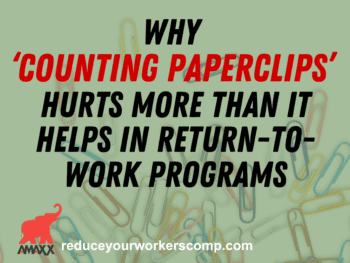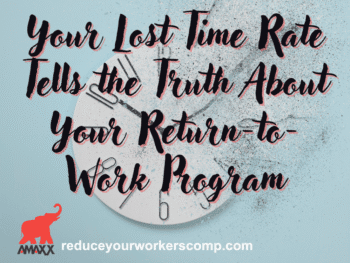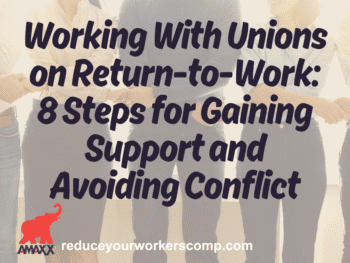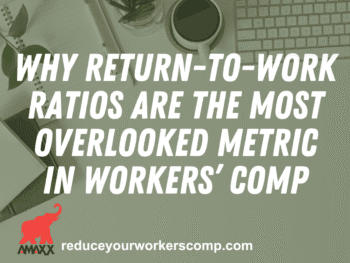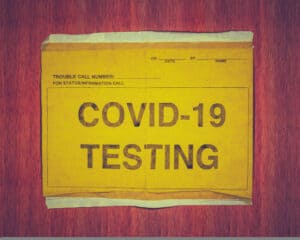
The idea of testing employees as part of the effort to return them safely back to work has a lot of appeal. On the surface of it, it makes great sense. Unfortunately, below the surface, there are numerous considerations that make decisions about testing a lot more complicated.
A Message on COVID-19 from WorkSTEPS Chief Medical Officer Dr. Ben Hoffman. Originally published at: https://www.worksteps.com/news-and-insights/7-6-20-covid-19-brief-to-test-or-not-to-test
COVID-19 RTW: to Test, or Not to Test – That Is the Question
Sometime in the past few weeks there must have been a story in the WSJ or a segment on CNBC or something that has gotten business executives thinking about testing asymptomatic employees for COVID-19. I say this because there has been a sharp uptick in C-Suite-driven questions about demand for employee testing. We’ve noticed it in our business, and it’s been a hot topic among my medical director peers.
Click Link to Access Free PDF Download
“13 Research Studies to Prove Value of Return-to-Work Program & Gain Stakeholder Buy-In”
- Timing: Molecular testing (a.k.a. PCR testing) yields a valid result for only the point in time when the specimen was obtained. Implication? Someone who tests negative today may test positive tomorrow.
- Consent: If testing is arranged by an employer, results can only be returned to the employer with employee consent. Otherwise, employers need to rely on self-report of test results. Implication? Administrative burden and a potential reliability gap due to self-reporting.
- False Positives: People who have had COVID-19 but who are no longer contagious may test positive because tests may interpret harmless viral fragments as the presence of an active virus. Implication? False-positive tests on people who are no longer sick can result in unnecessary quarantining of workers.
- Quality: PCR test reliability is dependent on both the quality of the specimen obtained and of the laboratory performing the analysis. Implication? Mistakes will likely be made.
- Turnaround Time and Availability: Testing supplies are in limited quantity and labs are backlogged. Implication? You may not be able to get testing done on-demand, and results may be delayed.
In addition to the above, companies need to consider the total cost of testing, including the cost of the tests themselves ($100 to $150), plus the cost of clinical personnel to administer tests, the infrastructure needed to administer tests, manage test-related permissions and information, and the communications burden of test implementation.
So, To Test or Not to Test?
If the question is: Should our company test all of our employees? the answer is: “probably not at the moment”
However, that doesn’t mean testing shouldn’t play an important role in keeping employees and customers safe. Most companies can justify testing certain employees based on specific use cases. Some examples of use cases:
FREE DOWNLOAD: “13 Research Studies to Prove Value of Return-to-Work Program & Gain Stakeholder Buy-In”
- A health care organization may want to regularly test (e.g. 1-2 times per week) their front-line workers.
- Nursing home and senior living operators may also want to test employees who work in close contact with vulnerable populations on a regular basis.
- Oil & Gas companies and power generators may want to test workers whose jobs require that they work (and sometimes live) in close quarters with other employees, contractors and customers.
- Companies may want to test employees who must fly domestically or internationally upon return from travel to rule out disease and avoid unnecessary quarantine.
- Companies may want to test employees who are identified through contact tracing as having been in close contact with an infected employee to rule out disease and avoid unnecessary quarantine. This use case could be expanded to all employees in a facility where there has been an outbreak of disease.
Developing a Use Case Testing Strategy
To develop a testing strategy, we recommend organizations implement the following process:
- Pull together a multi-disciplinary team with representation from health & safety, HR, operations and legal
- Identify a list of potential use cases. For each use case identify the group affected (who, where, how many), the rationale for testing, and any special logistical considerations, such as needing consent forms in different languages.
- Prioritize use cases based on risks, total costs (including administrative) and business needs.
- Prepare for/roll out testing use case by use case, looking for efficiencies and applying learnings as you go.
- Monitor and update. As testing technologies become cheaper and more reliable, and as your organization develops muscle memory around testing protocols, it will make sense to use testing for more and more use cases. Until that time, organizations should be strategic and selective in the use of tests.
Testing Doesn’t Replace Prevention
Even the most comprehensive approach to testing cannot guarantee that infected employees won’t show up to work where they can infect others. Companies must remain vigilant in implementation and enforcement of their COVID-19 prevention strategies.
How is your organization using testing as part of its COVID-19 strategy? If you have insights to share that others might find valuable, please let us know.
Finally, if your organization needs help identifying and prioritizing use cases or implementing testing protocols, know that we have built up a full range of capabilities to meet your needs. You can learn more about our services here.




